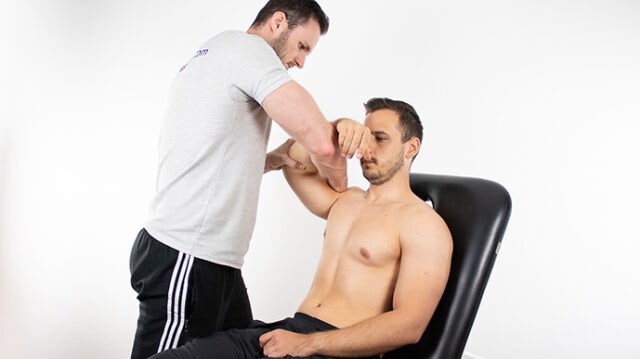Learn
Kim’s Test | Posteroinferior Labral Tear | Shoulder Instability Assessment
According to a study done by the inventor of the test themselves in the year 2005, Kim’s test has a sensitivity of 80% and a specificity of 94% in the diagnosis of posteroinferior labral tears. However, more studies will have to investigate the accuracy of this test with stricter study designs. For this reason, Kim’s test has a moderate clinical value in our opinion.
To execute the test, the patient is in sitting position, and the examiner positions himself behind. The examiner stabilizes the scapula with one hand and holds the patient’s affected arm at 90° abduction and internal rotation. Then the examiner applies a longitudinal force through the humerus at the elbow and moves the arm into horizontal adduction.
This test is positive if the patient experiences a sudden onset of posterior shoulder pain and a click in the shoulder. A painful response is also a predictor of failure for conservative treatment.
21 OF THE MOST USEFUL ORTHOPAEDIC TESTS IN CLINICAL PRACTICE

Other common orthopedic tests to assess posterior instability of the glenohumeral joint are:
Like what you’re learning?
BUY THE FULL PHYSIOTUTORS ASSESSMENT BOOK
- 600+ Pages e-Book
- Interactive Content (Direct Video Demonstration, PubMed articles)
- Statistical Values for all Special Tests from the latest research
- Available in 🇬🇧 🇩🇪 🇫🇷 🇪🇸 🇮🇹 🇵🇹 🇹🇷
- And much more!








